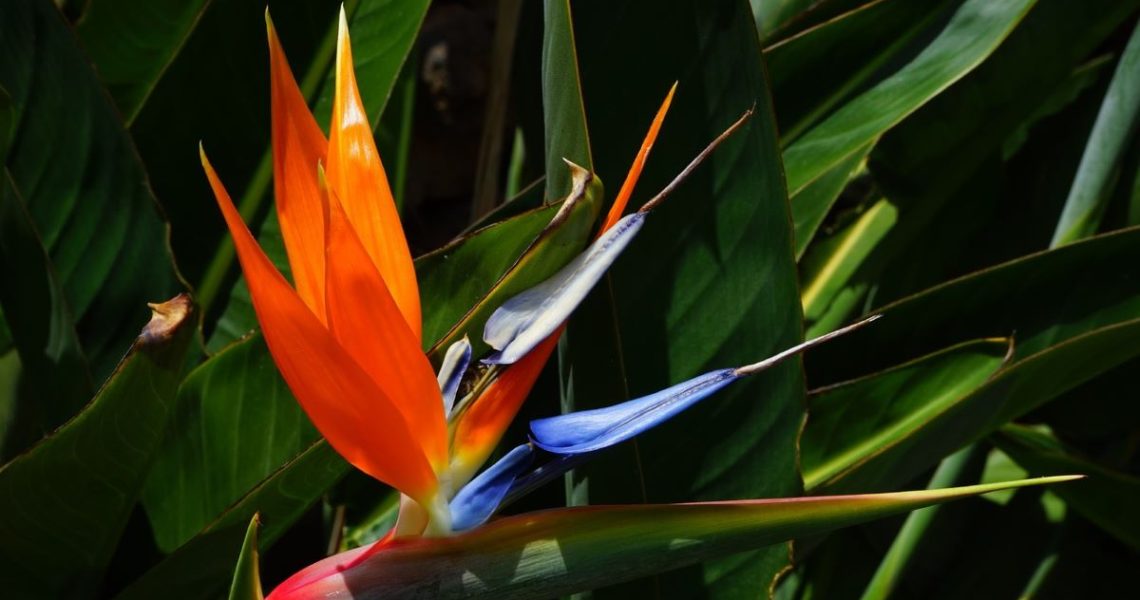The Strelitzia: Tropical Elegance in Interior Decor
In the realm of interior design, trends weave a tapestry that reflects the spirit of the times. From the timeless allure of wicker armchairs to the sunburst elegance of a Scandinavian sideboard, each element serves as a brushstroke on the canvas of contemporary aesthetics. Yet, amidst this eclectic symphony of décor, one living element stands out—the Strelitzia, commonly known as the Bird of Paradise plant.
In the age of Instagram, where global showcases abound with images of interiors adorned with #urbanjungle, the task of choosing a plant to embellish our homes is inevitably influenced by the deluge of trends. Over the decades, various botanical darlings have graced our living spaces, from the resilient Dracaena fragrans to the graceful Howea forsteriana. However, in recent years, one plant has emerged as the epitome of tropical chic—the Strelitzia.
Pedro Tabernero, owner of Flores Madrid florist, attests to the skyrocketing demand for Strelitzias: “Ten years ago, not a single one was sold. In the last three years, the demand has surged.” This surge, he explains, is attributed to interior designers incorporating the plant into the décor of luxury hotels in tropical destinations like the Caribbean, Mexico, and the Maldives, which subsequently cascaded into European trends through magazines and social media.
Exploring the Strelitzia Phenomenon
The Strelitzia genus, native to tropical and subtropical regions of Africa, boasts large, intensely green leaves reminiscent of banana plants. Its striking flower, resembling a bird’s head with a crest, earned it the moniker “Bird of Paradise.” Natalia Sáez, architect, landscape designer, and author, describes its aesthetic appeal: “Its structure and foliage exude an exotic air that instantly transports us to a paradisiacal beach, infusing any space with the vibrant energy of eternal tropical spring.”
Within the Strelitzia genus, three species reign supreme in interior décor: Strelitzia reginae, Strelitzia nicolai, and Strelitzia augusta. Of these, the Strelitzia nicolai, with its towering presence and elegant foliage, commands attention as a solitary statement piece in interior design. Sáez recommends placing it in spacious rooms to accentuate its grandeur, ensuring stability with a heavy pot and facilitating mobility with a wheeled tray. As for the planter, options abound—from terracotta urns to modern self-watering pots, each enhancing the plant’s majestic presence.
Embracing Imperfection: The Charm of Strelitzia
One of the unique attributes of Strelitzias is their resilient nature, shaped by millennia of adaptation to their tropical habitats. Sáez explains that the plant’s leaves develop fissures to withstand strong winds and rains, a testament to nature’s ingenuity. While indoor specimens often boast flawless foliage, outdoor counterparts exhibit these charming imperfections, a testament to their evolutionary history.
Caring for Strelitzias is relatively straightforward, requiring ample sunlight, well-drained soil, and occasional watering. Sáez advises placing them in bright locations with morning sunlight or filtered afternoon rays, with bathrooms offering ideal conditions due to their humidity. However, adequate ventilation is essential to prevent stagnation. In colder climates, protection from frost is necessary, although Strelitzias thrive in mild coastal regions like those of Spain.
Creating Harmony: Strelitzia in Interior Ensembles
While a solitary Strelitzia exudes unparalleled charisma, pairing it with complementary species enhances the ambiance of any interior space. Sáez suggests composing clusters of plants with varying heights to create dynamic compositions, with shorter species complementing the towering Strelitzia. Alternatively, leveraging its ample foliage to provide shade for smaller plants fosters a harmonious ecosystem within the home.
Despite its allure, the Strelitzia, particularly the Strelitzia nicolai, commands a premium compared to other large-scale species like Kentia palms or Ficus trees. Sáez justifies this premium, noting that larger specimens are more resilient and easier to maintain, making them a worthwhile investment for interior landscapes. However, for budget-conscious individuals, starting with smaller specimens offers the satisfaction of witnessing their growth over time.
In essence, the Strelitzia epitomizes the UrbanJungle trend—a fusion of nature’s splendor with contemporary interiors, transforming living spaces into verdant sanctuaries. As we embrace the allure of tropical elegance, the Strelitzia stands as a testament to the timeless appeal of botanical beauty in interior design.
